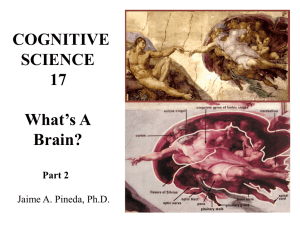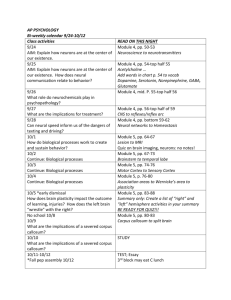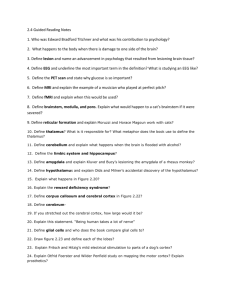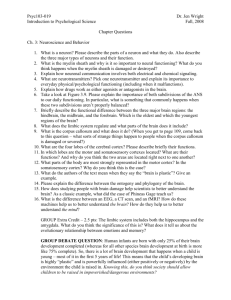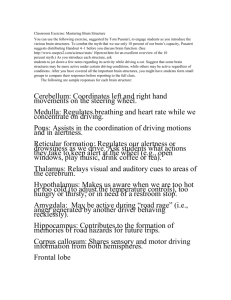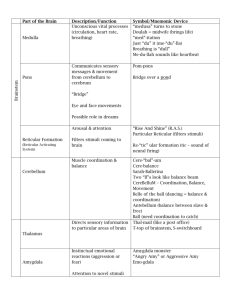Neuroscience and Behavior Chapter 2
advertisement
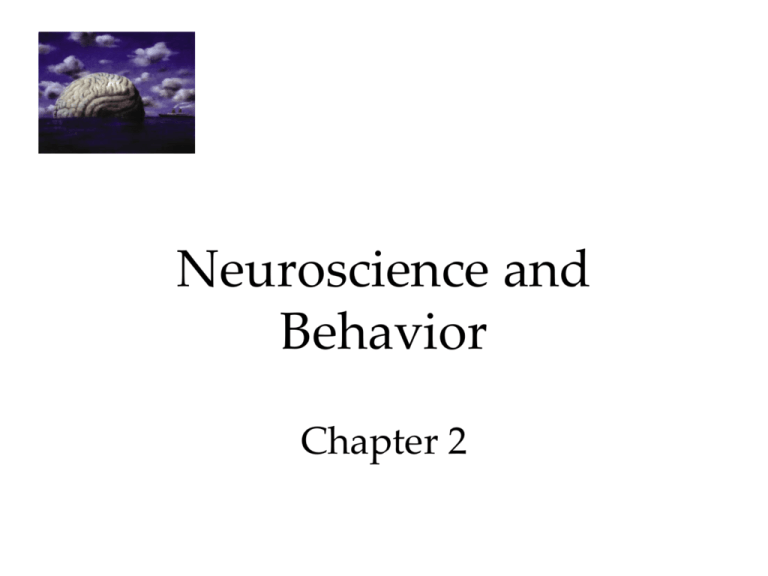
Neuroscience and Behavior Chapter 2 1 The Cerebral Cortex The intricate fabric of interconnected neural cells that covers the cerebral hemispheres. It is the body’s ultimate control and information processing center. 2 Structure of the Cortex Each brain hemisphere is divided into four lobes that are separated by prominent fissures. These lobes are the frontal lobe (forehead), parietal lobe (top to rear head), occipital lobe (back head) and temporal lobe (side of head). 3 Functions of the Cortex The Motor Cortex is the area at the rear of the frontal lobes that control voluntary movements. The Sensory Cortex (parietal cortex) receives information from skin surface and sense organs. 4 Visual Function Courtesy of V.P. Clark, K. Keill, J. Ma. Maisog, S. Courtney, L.G. Ungerleider, and J.V. Haxby, National Institute of Mental Health The functional MRI scan shows the visual cortex is active as the subject looks at faces. 5 Auditory Function The functional MRI scan shows the auditory cortex is active in patients who hallucinate. 6 Association Areas More intelligent animals have increased “uncommitted” or association areas of the cortex. 7 Language Aphasia is an impairment of language, usually caused by left hemisphere damage either to Broca’s area (impaired speaking) or to Wernicke’s area (impaired understanding). 8 Specialization & Integration Brain activity when hearing, seeing, and speaking words 9 The Brain’s Plasticity The brain is sculpted by our genes but also by our experiences. Plasticity refers to the brain’s ability to modify itself after some type of injury or illness. 10 Our Divided Brain Our brain is divided into two hemispheres. The left hemisphere processes reading, writing, speaking, mathematics, and comprehension skills. In the 1960s, it was termed as the dominant brain. 11 Splitting the Brain A procedure in which the two hemispheres of the brain are isolated by cutting the connecting fibers (mainly those of the corpus callosum) between them. Martin M. Rother Courtesy of Terence Williams, University of Iowa Corpus Callosum 12 Split Brain Patients With the corpus callosum severed, objects (apple) presented in the right visual field can be named. Objects (pencil) in the left visual field cannot. 13 Divided Consciousness 14 Try This! Try drawing one shape with your left hand and one with your right hand, simultaneously. BBC 15 Non-Split Brains People with intact brains also show left-right hemispheric differences in mental abilities. A number of brain scan studies show normal individuals engage their right brain when completing a perceptual task and their left brain when carrying out a linguistic task. 16 Brain Organization & Handedness Is handedness inherited? Yes. Archival and historic studies, as well as modern medical studies, show that the right hand is preferred. This suggests genes and/or prenatal factors influence handedness. 17 Is it Alright to be Left Handed? Being left handed is difficult in a right-handed world. 18 Is it Alright to be Left Handed? The percentage of left-handed individuals decreases sharply in samples of older people (Coren, 1993). 19

